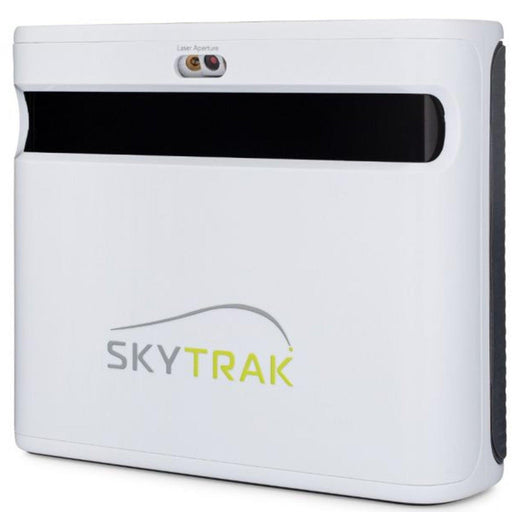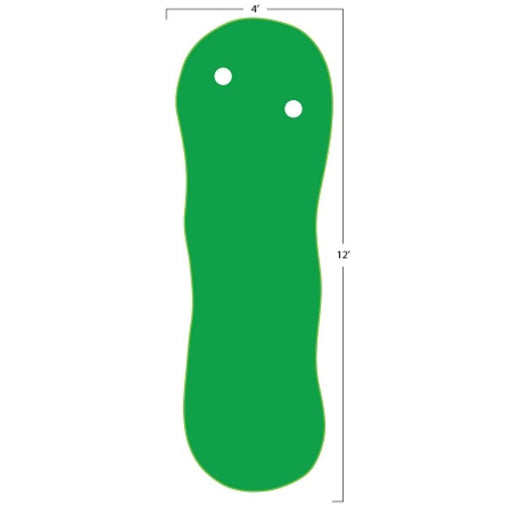
Unveiling the Accuracy of Golf Simulators
Golf simulators have revolutionized the way golf enthusiasts practice and enjoy the sport. With promises of accurate ball tracking, realistic graphics, and swing analysis, these virtual setups offer a convenient alternative to hitting the greens. But just how accurate are golf simulators? In this blog post, we'll delve into the factors that influence the accuracy of golf simulators and help you understand what to expect from these high-tech systems.
1. Ball Tracking Technology:
Accurate ball tracking is a crucial aspect of any golf simulator. Most modern simulators use advanced sensors and cameras to track the ball's trajectory, speed, spin, and other critical data points. While these technologies have come a long way, it's important to recognize that no tracking system is perfect. Factors like lighting conditions, the quality of the equipment, and the simulator's calibration can all affect the accuracy of ball tracking.
2. Swing Analysis:
Golf simulators often come with built-in swing analysis features that provide golfers with valuable insights into their swings. These analyses can include clubhead speed, swing path, angle of attack, and more. While the data provided by simulators can be incredibly helpful for improving your swing mechanics, it's essential to remember that the accuracy of these analyses depends on the quality of the simulator's sensors and algorithms.
3. Environmental Factors:
Indoor golf simulators are susceptible to environmental factors that can influence their accuracy. For instance, the type of flooring, the room's dimensions, and even the air temperature can impact how the ball behaves after impact. While modern simulators attempt to account for these factors through complex algorithms, there may still be limitations in replicating the outdoor golfing experience perfectly.
4. Golf Course Realism:
Simulator developers invest significant effort in recreating golf courses in intricate detail. From the fairways and bunkers to the undulating greens, the goal is to provide an immersive experience. However, the accuracy of course depiction can vary between different simulator brands and models. While some simulators use satellite imagery and high-definition graphics to replicate courses accurately, others may not capture the nuances as effectively.
5. Skill Transfer:
One of the critical questions surrounding golf simulators is whether the skills acquired in the virtual environment transfer effectively to real-life golfing. While simulators can certainly help you work on your swing mechanics and strategy, there might be some differences in how you execute shots on a simulator compared to a real golf course. The absence of external factors like wind and terrain changes can affect the way you approach shots in the virtual world.
How Lifelike?
Golf simulators have made remarkable strides in delivering a lifelike golfing experience that can be enjoyed indoors. They offer valuable opportunities for practice, swing analysis, and entertainment. However, it's important to approach golf simulators with a balanced perspective. While they can provide a significant amount of accuracy, they're not a perfect substitute for real golfing conditions. Factors like ball tracking technology, environmental influences, and skill transfer all play a role in determining the level of accuracy you can expect.
Incorporating a golf simulator into your practice routine can undoubtedly enhance your game, but it's crucial to remember that no simulation can fully replicate the unpredictability and complexities of an actual golf course. Embrace golf simulators as a valuable tool in your golf improvement journey, while also recognizing their limitations and the importance of spending time on the real fairways to truly refine your skills.

Have Questions About Golf Simulators?
Our expert team is here to help you find the perfect golf simulator for your needs.
Featured products
-
SkyTrak+
Original price $2,995.00 - Original price $3,145.00Original price$2,995.00 - $3,145.00$2,995.00 - $3,145.00Current price $2,995.00Introducing the SkyTrak+ Launch Monitor: Unmatched Accuracy and Advanced Features Experience a new level of precision and innovation with the SkyTr...
View full details -
ProTee Majestic Simulator Package
Original price $9,618.00 - Original price $13,848.00Original price$9,618.00 - $13,848.00$9,618.00 - $13,848.00Current price $9,618.00ProTee Majestic Golf Simulator Package: Elevate Your Indoor Golf Experience Transform your home or business into a golfer’s dream with the ProTee M...
View full details -
Eagle Golf Mat
Original price $370.00 - Original price $1,130.00Original price $370.00$370.00$370.00 - $1,130.00Current price $370.00Introducing the Eagle Golf Mat: The Ultimate Golf Experience Are you passionate about golf and demand nothing but the very best in your practice eq...
View full details -
Retractable HomeCourse® Golf ProScreen 180
Original price $2,299.00Original price $2,299.00 - Original price $2,299.00Original price $2,299.00Current price $1,999.00$1,999.00 - $1,999.00Current price $1,999.00HomeCourse® Golf ProScreen 180 HomeCourse® Golf ProScreen 180 is a retractable golf screen and enclosure. HomeCourse® Golf ProScreen 180's ballisti...
View full details -
The Augusta V2 4'x12' 2 Cups
Original price $399.00Original price $399.00 - Original price $399.00Original price $399.00Current price $329.00$329.00 - $329.00Current price $329.00The Augusta is one of Big Moss’ traditional models. It offers unmatched versatility for teaching and year round practice. Make a long-term investme...
View full details





